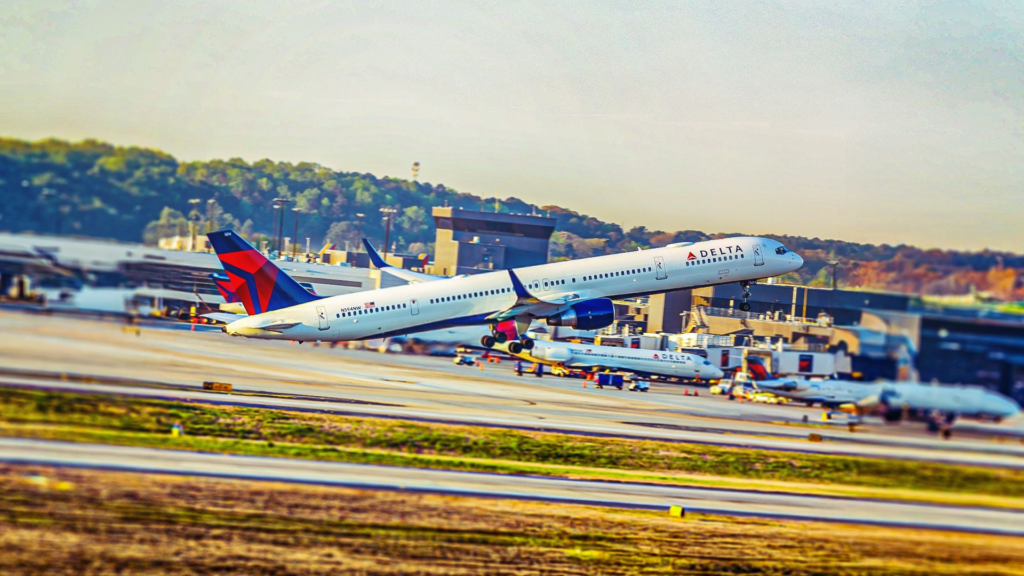When it comes to the ‘big three’ US legacy carriers, namely
For American, this is set to become an increasingly important part of its transatlantic strategy, thanks to the arrival of the Airbus A321XLR. In recent times, the carrier and its pilots have been preparing extensively for the type’s launch at the airline, around which there is strong anticipation. Its SkyTeam rival Delta, on the other hand, is shying away from transatlantic narrowbody flights due to ‘brand issues.’
Delta Doesn’t Want To Operate Transatlantic Narrowbody Flights
Delta Air Lines is a key player in the transatlantic market, and almost exclusively uses widebody twinjets to connect its US hubs with destinations in Europe and Africa. Its aircraft of choice on this front come from the Airbus A330, A350, and
As far as the future of its fleet is concerned, data from ch-aviation shows that Delta has outstanding orders for Airbus A220s, A321neos, A350s, and Boeing 737 MAXs. However, of these, only the widebody A350s will see long-haul action, with Delta President Glen Hauenstein explaining in a recent earnings call that the carrier’s narrowbodies do not have a transatlantic future. Indeed, he explained:
“Our product is best in class in the transatlantic [market]. (…) We’ve chosen not to fly narrowbodies in the transatlantic [market] because of product and brand issues. So we’re not going to go in that direction.”
American Airlines Is Gearing Up To Launch The Airbus A321XLR
This stance contravenes that of Delta Air Lines’ main US legacy rivals, American and United, both of whom have big plans for single-aisle long-haul operations in the near future. Indeed, of the four new European routes that United revealed last week, two will be served by the Boeing 737 MAX 8.
Meanwhile, in recent times, American Airlines has begun to prepare for the arrival of 50 Airbus A321XLR twinjets. Two of these next-gen narrowbodies have arrived at the oneworld member so far, and, as detailed in the video below, the airline is reportedly planning to base them in New York.
Here, JFK Airport would serve as an ideal transatlantic gateway for lower-demand routes from the East Coast to secondary cities in Europe, where the Airbus A321XLR represents the perfect balance of range and capacity. As far as the potential ‘brand issues’ related to using such jets on long-haul flights are concerned, American is looking to allay these fears by deploying a low-density, premium-heavy cabin setup.
How To Prepare Pilots For Long-Haul Airbus A321XLR Operations
Given the considerable step change that the Airbus A321XLR will represent compared to American Airlines’ current widebody-dominated transatlantic operations, the carrier is undertaking extensive preparation to ensure that its pilots are ready for the change. Altitude Yes notes that, at present, the type is expected to enter service at the airline in mid to late-December, initially flying between Los Angeles and JFK.
A transatlantic flight training program using one of American Airlines’ existing Airbus A321neos has been front and center when it comes to the carrier’s preparation for its launch of the A321XLR. Indeed, September saw the airline operate more than 20 empty round trips between Philadelphia International Airport (PHL) and Edinburgh (EDI) in order to get pilots up to speed with flying narrowbodies on longer flights.
According to a corresponding statement released by American Airlines, the purpose of this initiative was to highlight the unique aspects of transatlantic flying to its narrowbody pilots who might otherwise be unfamiliar with the conventions of such routes. These include the North Atlantic Tracks, non-radar ATC operations, satellite ATC communications, and the various diversion airports that might have to be used.

